Falling for Flavor: Spiced Pumpkin Pancake Recipe with a Crunchy Pecan Twist
Embrace the Magic of Fall with our Pumpkin Pancake Recipe:
A Masterpiece Born from the Heart of the Season!
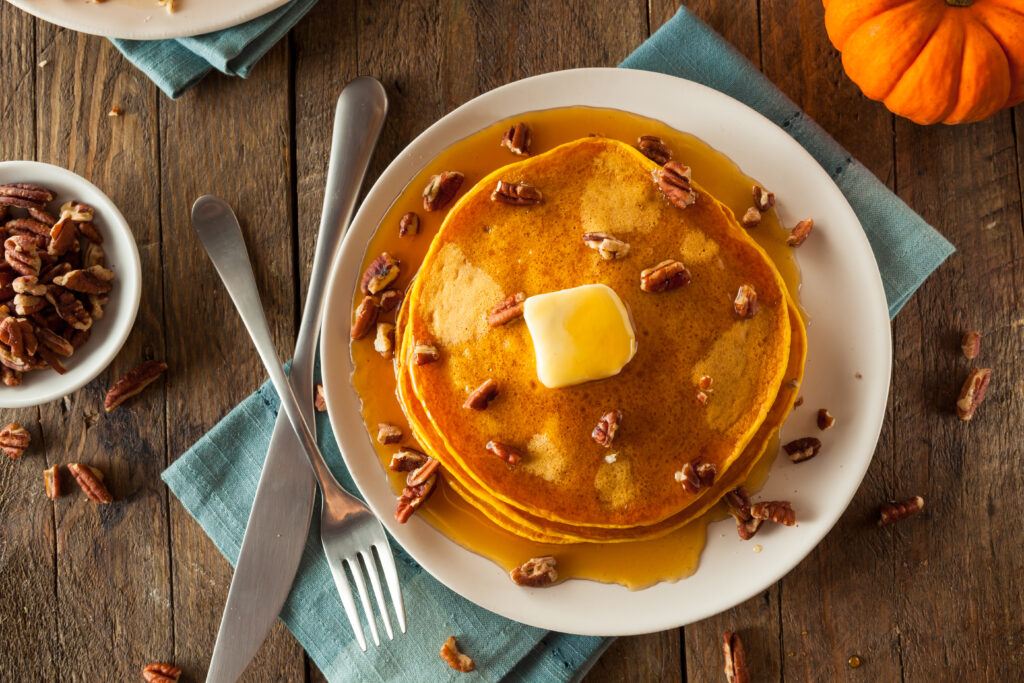
As the leaves paint the world in hues of amber and gold, our recipe invites you to savor the earthy sweetness of pumpkin puree harmoniously blended with a medley of aromatic spices – cinnamon, nutmeg, ginger, and cloves. These pancakes emerge from the griddle as a delightful testament to fall’s cozy comforts.
Imagine the first sip of hot apple cider or the feeling of your favorite sweater hugging you on a brisk morning – precisely the experience our Pumpkin Pancake Recipe. The batter, enriched with velvety buttermilk, dances across the skillet, giving rise to fluffy, soft, and substantial marvels. A gentle flip reveals a perfectly golden exterior, ready to cradle the essence of autumn in every mouthful.
But the story doesn’t end there. A drizzle of pure maple syrup awakens the senses as its amber cascade merges with the pancake’s embrace. And then, there are the pecans – a symphony of crunch and nutty delight that elevates this creation to perfection. A sprinkle of cinnamon whispers of cinnamon-scented breezes adding the final touch to this culinary masterpiece.
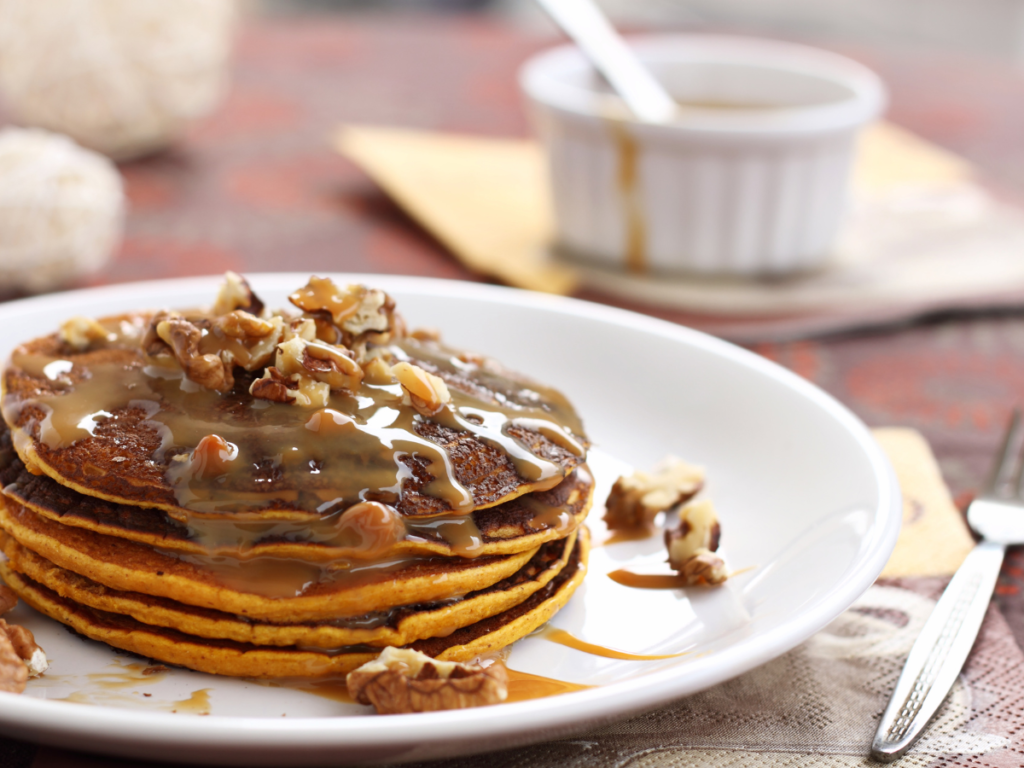
Table of Contents
I Have a Canned Pumpkin Pie Filling. Can I use that For This Pumpkin Pancake Recipe
Yes, you can use canned pumpkin pie filling to make this pumpkin pancake recipe, with a few things to keep in mind:
Adjustments: Since canned pumpkin pie filling already contains added spices and sweeteners meant for making pies, you’ll need to adjust the other ingredients in your pancake recipe to accommodate the flavors and sweetness already present in the filling. You may want to reduce the amount of additional spices and sweeteners you add to the pancake batter.
Texture: Canned pumpkin pie filling might have a slightly different texture than plain pumpkin puree. It could be slightly thicker due to the added ingredients. You can adjust the consistency of the pancake batter by adding a little more liquid (such as milk or buttermilk) if needed.
Taste: Keep in mind that using pumpkin pie filling will impart a more pronounced pumpkin spice flavor to your pancakes. This can be a delicious twist if you’re looking for a spicier and sweeter pancake.
Flexibility: While canned pumpkin pie filling can add convenience, using plain canned pumpkin puree offers more flexibility and control over the final taste and texture of your pancakes. With plain pumpkin puree, you have the ability to adjust the spices and sweeteners to your preference.
If you decide to use canned pumpkin pie filling for this pumpkin pancake recipe, taste the batter as you go and make adjustments as needed to balance the flavors and ensure that the pancakes turn out as delicious as you envision.
Grab Everything you Need:
Before you begin making this Pumpkin Pancake Recipe, gathering all the necessary tools and equipment is a good idea to ensure a smooth cooking process. Here’s a list of tools you’ll need:
- Large Mixing Bowl: For combining dry and wet ingredients separately before mixing them.
- Whisk: To Mix and combine the pancake batter evenly and smoothly.
- Measuring Cups and Spoons: Essential for accurate measurement of ingredients.
- Spatula or Mixing Spoon: To gently fold the wet and dry ingredients together and to portion out the batter onto the skillet.
- Non-Stick Skillet or Griddle: For cooking the pancakes. A non-stick surface is essential to prevent sticking and achieve even cooking.
- Cooking Spray or Butter: To grease the skillet or griddle before cooking the pancakes.
- Small Bowl (for pecan topping): To mix the chopped pecans, maple syrup, cinnamon, and salt for the topping.
- Baking Sheet: If you plan to toast the pecans for added flavor and crunch, you’ll need a baking sheet for this step.
- Food Processor or Blender (optional): If you’re making homemade pumpkin puree, you may need a food processor or blender to puree the roasted pumpkin flesh.
- Plate or Platter: To stack and serve the cooked pancakes.
- Sieve or Strainer (optional): If you want an extra smooth pumpkin puree, you might use a fine-mesh sieve or strainer to remove any remaining fibers.
- Kitchen Towel: To cover and keep the cooked pancakes warm while preparing the remaining batches.
- Turner or Pancake Flipper: To carefully flip the pancakes when cooking.
- Stove: To cook the pancakes over the heat source.
Remember that kitchen equipment can vary, so adapt the tools based on what you have available. Assemble these items before you start cooking to make the process more efficient and enjoyable.
Check Out the Best Pans To Cook Pancakes
Want to Make Your Own Fresh Pumpkin Puree?

Making homemade pumpkin puree is quite simple and can be a great way to use fresh pumpkins in you pumpkin pancake recipe when they are in season. Here’s a step-by-step guide on making homemade pumpkin puree: it depends on your preference.
- Choose the Right Pumpkin:
- Look for pie pumpkins or sugar pumpkins, which are smaller and sweeter than the larger pumpkins used for carving. These pumpkins have a smoother texture and are ideal for making puree.
- Preheat the Oven:
- Preheat your oven to 375°F (190°C).
- Prepare the Pumpkin:
- Wash the pumpkin thoroughly to remove any dirt or debris.
- Use a sharp knife to carefully cut off the stem and then cut the pumpkin in half vertically.
- Remove Seeds and Strings:
- Use a spoon to scoop out the seeds and stringy fibers from the center of each pumpkin half. You can save the seeds for roasting if you like.
- Roast the Pumpkin:
- Place the pumpkin halves, cut side down, on a baking sheet lined with parchment paper or aluminum foil.
- Roast the pumpkin in the preheated oven for about 45-60 minutes, or until the flesh is fork-tender.
- Scoop the Flesh:
- Remove the roasted pumpkin from the oven and let it cool slightly.
- Once it’s cool enough to handle, use a spoon to scoop out the cooked pumpkin flesh from the skin.
- Blend or Mash:
- Transfer the pumpkin flesh to a food processor, blender, or use a potato masher.
- Blend or mash until the pumpkin is smooth and creamy. If using a blender or food processor, you may need to work in batches.
- Strain (Optional):
- If you prefer an even smoother texture, you can strain the pumpkin puree through a fine-mesh sieve to remove any remaining fibers.
- Store or Use:
- Allow the homemade pumpkin puree to cool completely before storing it in an airtight container in the refrigerator. It can also be frozen for longer storage.
- Use the homemade pumpkin puree in your favorite recipes, such as soups, pies, mini pancakes, muffins, and more!
*Side Note*
Homemade pumpkin puree has a fresher and more intense flavor than canned pumpkin. It’s a versatile ingredient that can elevate your fall and holiday dishes. The size of the pumpkin will determine the amount of puree you’ll get so that you can adjust the recipe quantities accordingly.
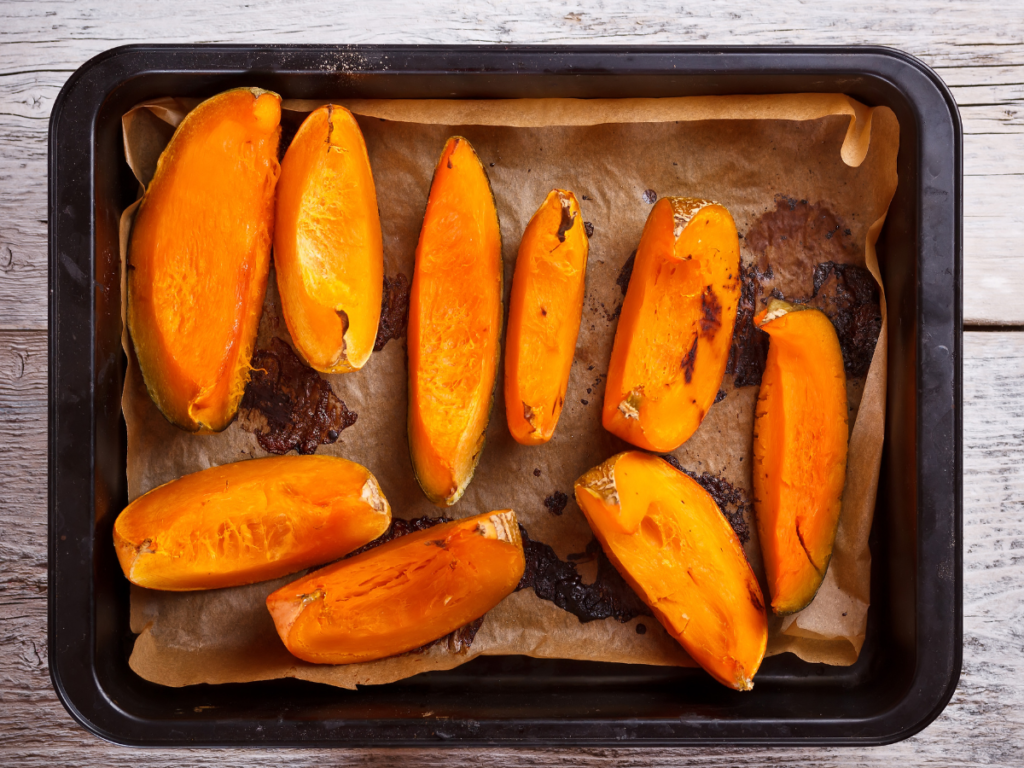
Know Your Veggies:
Pumpkin is both delicious and nutritious, making it an excellent ingredient for breakfast, mainly when used instead of traditional pancake ingredients.
1. Rich in Nutrients: Pumpkin is packed with essential vitamins and minerals. It’s a good source of vitamin A, which is important for maintaining healthy vision, skin, and immune function. Pumpkin also contains vitamins C and E, as well as minerals like potassium and magnesium.
2. Low in Calories and Fat: Pumpkin is naturally low in calories and fat, making it a healthier option for those looking to manage their weight and overall health.
3. High in Fiber: Pumpkin is a good source of dietary fiber, which is beneficial for digestion and helps promote feelings of fullness, making it a satisfying choice for a hearty breakfast.
4. Antioxidant-Rich: The vibrant orange color of pumpkin indicates the presence of beta-carotene, a powerful antioxidant that helps protect cells from damage and supports overall health.
5. Natural Sweetness: Pumpkin has a naturally sweet flavor, which can help reduce the need for excessive added sugars in recipes. This makes it a great ingredient for adding sweetness to your pancakes without relying solely on sugar.
6. Versatility: Pumpkin can be used in various dishes, both sweet and savory. Its mild flavor allows it to pair well with a range of ingredients and spices, making it a versatile addition to breakfast recipes.
7. Fall Flavors: Pumpkin’s warm and comforting flavor profile, often associated with fall, can add a cozy and seasonal touch to your breakfast, enhancing the overall dining experience.
8. Unique Texture: When incorporated into pancake batter, pumpkin adds moisture and a pleasing texture, resulting in pancakes that are fluffy, tender, and slightly denser than traditional pancakes.
*FUN FACT*
By using pumpkin as a key ingredient in your breakfast pancakes, you not only create a delicious and satisfying meal but also boost the nutritional value of your breakfast. The natural sweetness and wealth of nutrients in pumpkin make it an excellent choice for a hearty and wholesome breakfast that can help kick-start your day on a nutritious note.
Pumpkin Pancake Recipe
Difficulty: Easy12
Pancakes20
minutes20
minutesUnleash the enchantment of fall with these Pumpkin Pancakes that are more than just breakfast – they’re a journey into the heart of the season. Velvety pumpkin puree dances with warm spices, while toasted pecans add a satisfying crunch. It’s a delightful symphony of flavors that will leave you reaching for seconds and savoring the joys of cooler days. So grab your apron and let’s turn ordinary mornings into extraordinary autumn feasts!
Ingredients:
- For The Pancakes:
1 cup all-purpose flour
2 tablespoons granulated sugar
1 teaspoon baking powder
1/2 teaspoon baking soda
1/2 teaspoon salt
1 teaspoon ground cinnamon
1/2 teaspoon ground nutmeg
1/4 teaspoon ground ginger
1/4 teaspoon ground cloves
1 cup pumpkin puree (canned or homemade)
1 large egg
1 cup buttermilk
2 tablespoons unsalted butter, melted
1 teaspoon vanilla extract
- For the Pecan Topping:
1 cup chopped pecans
1/4 cup pure maple syrup
1/2 teaspoon ground cinnamon
Directions:
- Prep:
- Prepare the Pecan Topping:
In a small bowl, combine chopped pecans, maple syrup, ground cinnamon, and a pinch of salt. Set aside to let the flavors meld while you make the pancakes. - Make the Pumpkin Pancake Batter:
In a large mixing bowl, whisk together the flour, granulated sugar, baking powder, baking soda, salt, ground cinnamon, ground nutmeg, ground ginger, and ground cloves. - In a separate bowl, whisk together the pumpkin puree, egg, buttermilk, melted butter, and vanilla extract until well combined.
- Pour the wet ingredients into the dry ingredients and gently fold until just combined. Be careful not to overmix; a few lumps are okay. Let the batter rest for about 5 minutes.
- Cooking The Pancakes:
- Preheat a non-stick skillet or griddle over medium heat. Lightly grease the surface with butter or cooking spray.
- Using a 1/4-cup measuring cup, scoop the batter onto the skillet to form pancakes. Cook until bubbles form on the surface and the edges look set, about 2-3 minutes.
- Carefully flip the pancakes and cook for an additional 1-2 minutes, or until golden brown and cooked through. Adjust the heat as needed to prevent burning.
- Transfer the cooked pancakes to a plate and keep them warm by covering with a clean kitchen towel.
- Serve the Pumpkin Pancakes with Pecan Topping:
To serve, stack the pumpkin pancakes on individual plates. - Drizzle the prepared pecan topping generously over the pancakes.
- Add a pat of butter on top if desired, and serve with additional maple syrup on the side.
Notes
- To enhance the pumpkin flavor even more, add a dash of pumpkin pie spice to the pancake batter. Additionally, you can serve the pancakes with whipped cream or a dollop of Greek yogurt for added creaminess. Feel free to adjust the sweetness and spices according to your taste preferences.
- You can quickly substitute for buttermilk or create a buttermilk alternative using common household ingredients. Here are a few options:
1. Homemade Buttermilk Substitute:
For every 1 cup of buttermilk needed, add 1 tablespoon of white vinegar or lemon juice to a measuring cup.
Fill the rest of the measuring cup with milk (dairy or non-dairy) until you reach the 1-cup mark.
Stir the mixture gently and let it sit for about 5-10 minutes before using. The acid will react with the milk, creating a buttermilk-like consistency.
2. Yogurt Substitute:
You can often substitute plain yogurt for buttermilk in a 1:1 ratio. If the yogurt is thick, you can thin it with a little milk until it reaches the desired consistency.
3. Sour Cream Substitute:
Sour cream can also be used as a buttermilk substitute. Use it in a 1:1 ratio, or thin it with a little milk if it’s thick.
4. Milk and Vinegar/Lemon Juice:
You can create a buttermilk-like substitute using milk and an acid if you don’t have yogurt or sour cream.
Mix 1 cup of milk (dairy or non-dairy) with 1 tablespoon of white vinegar or lemon juice. Stir and let it sit for about 5-10 minutes before using.
Choose the substitute that works best for you based on the ingredients you have on hand and any dietary considerations. The goal is to introduce acidity into the pancake batter, which helps create a tender and flavorful result similar to using buttermilk.

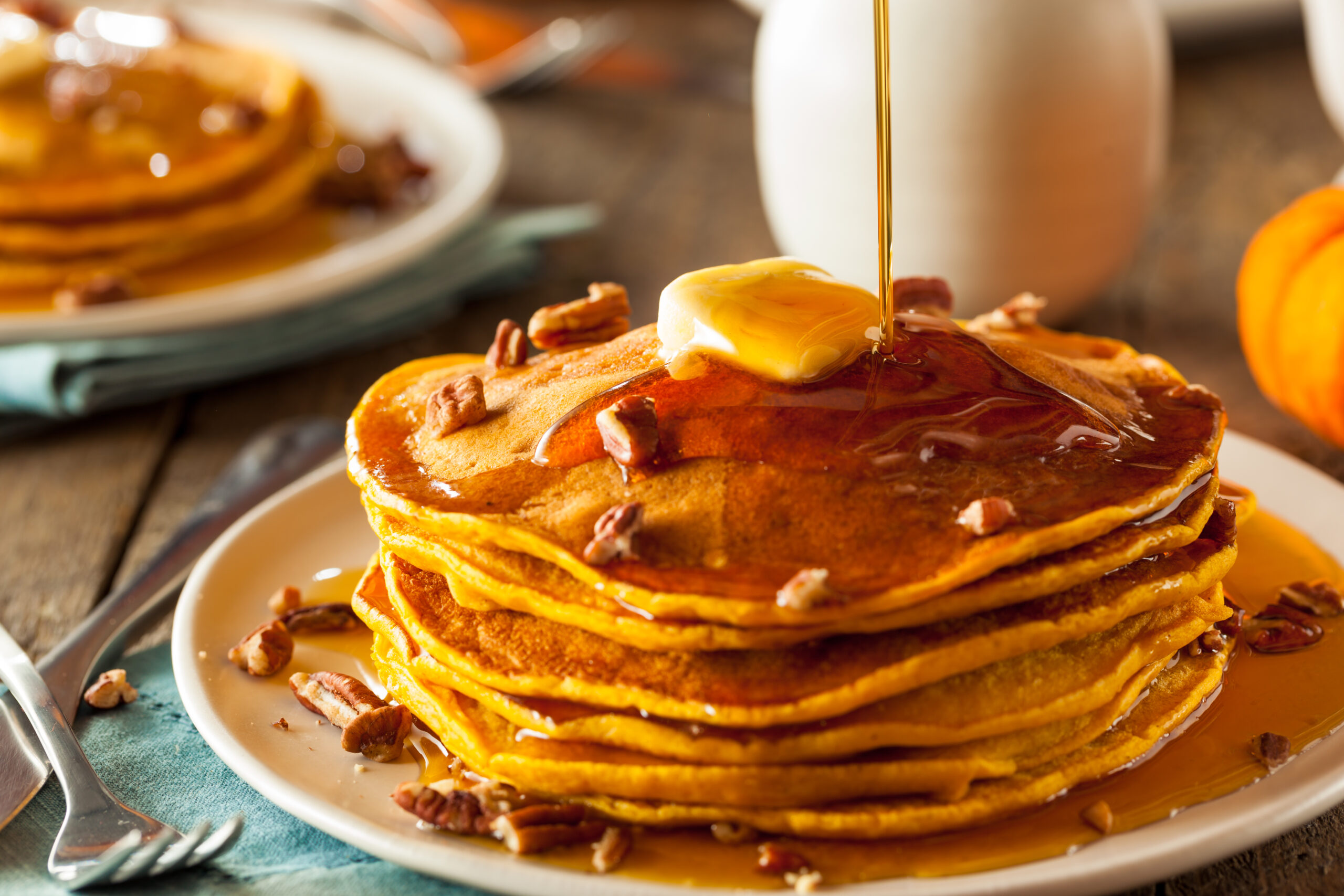
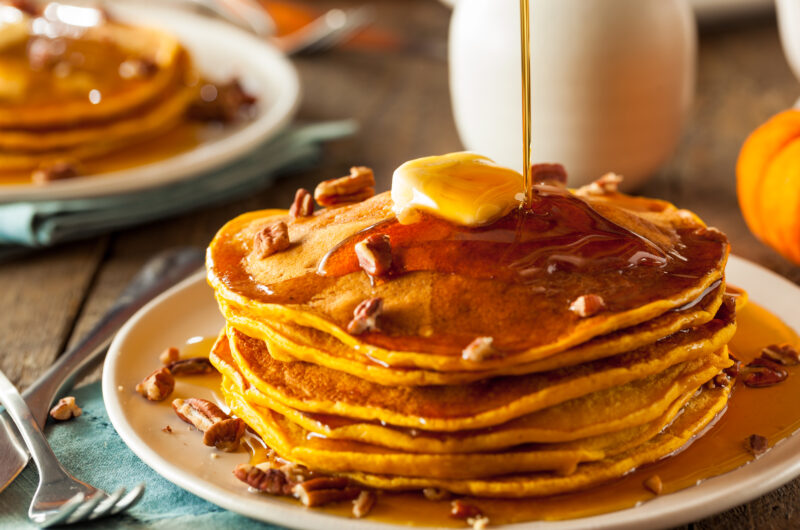
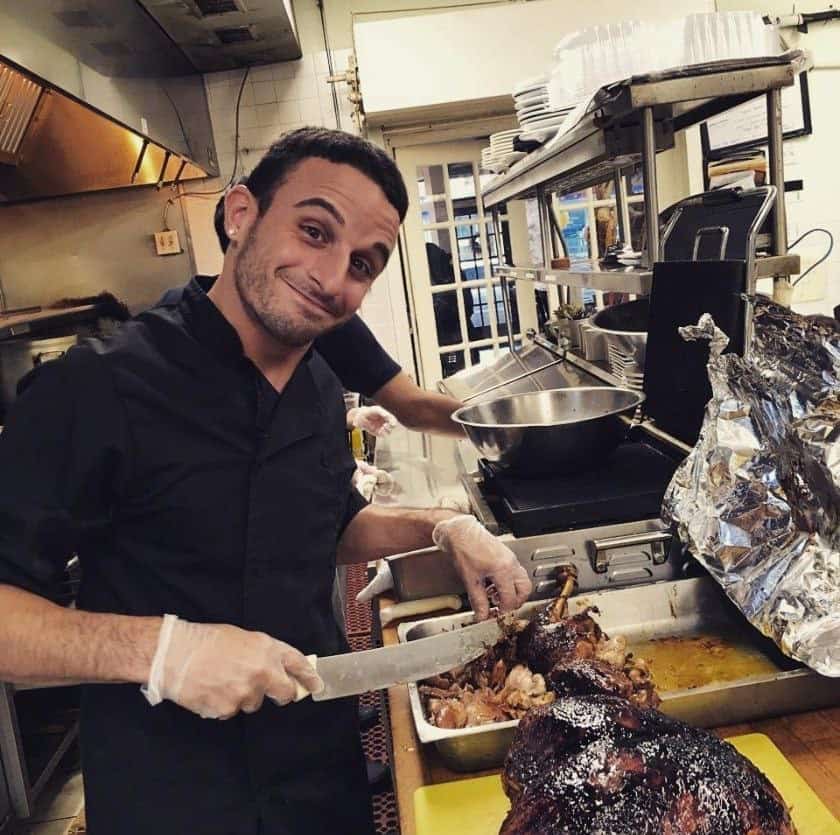
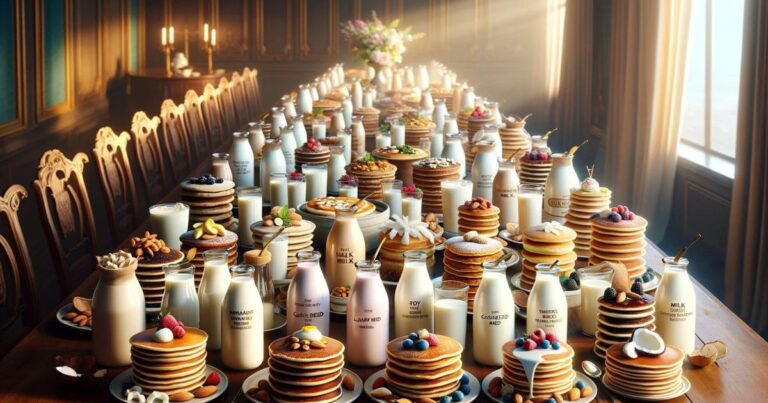
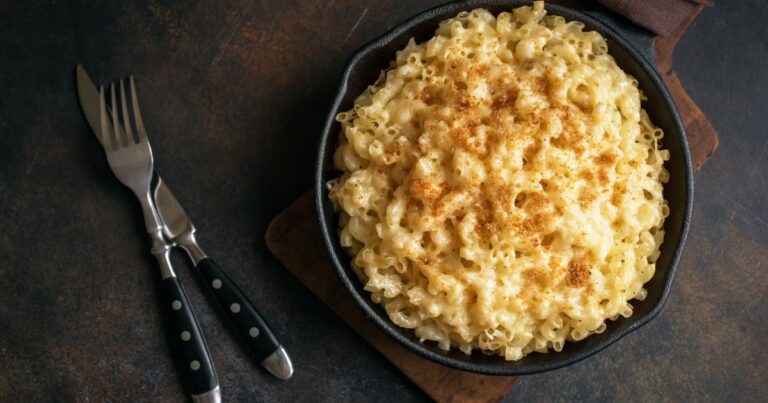
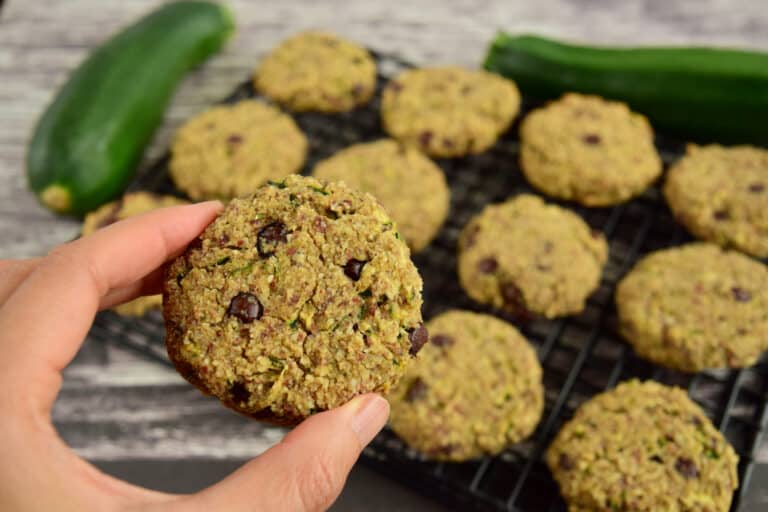
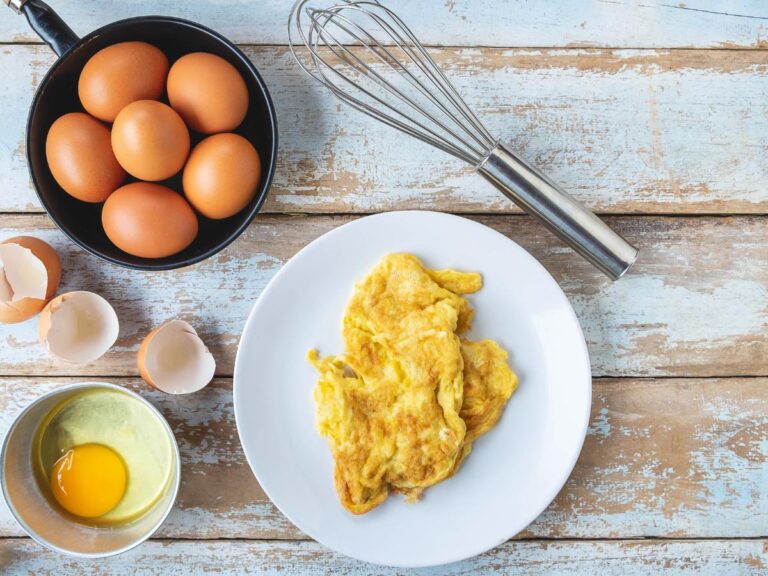
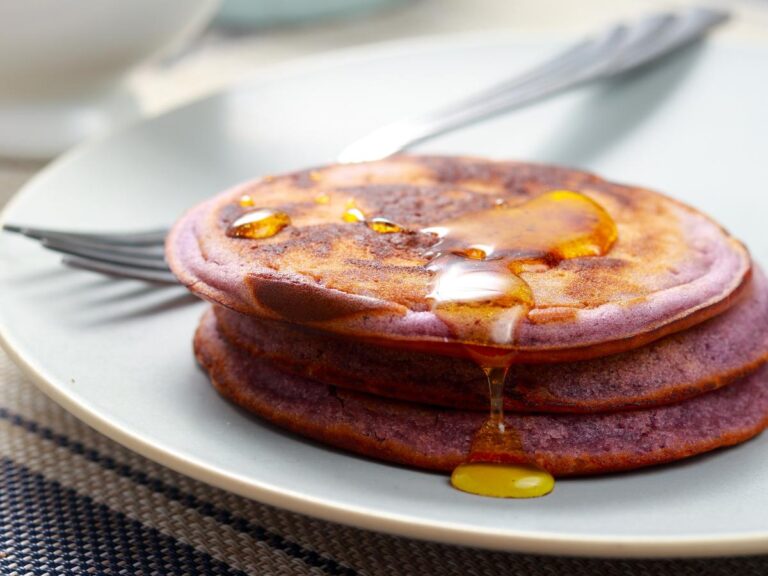
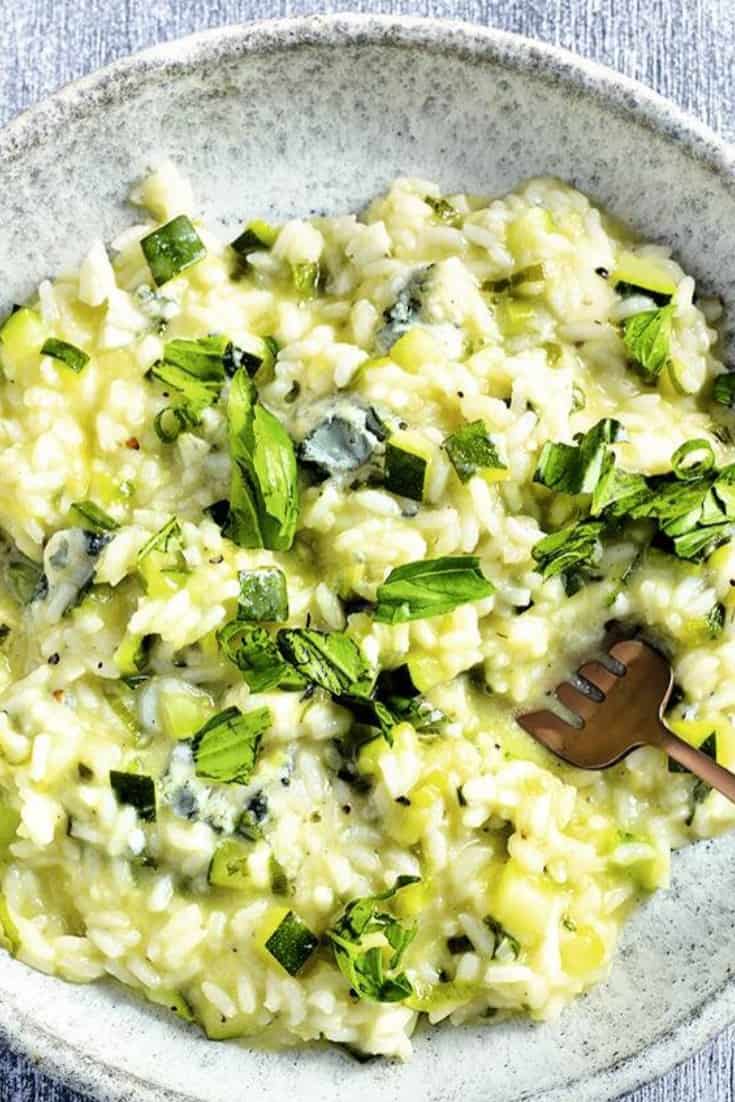
7 Comments